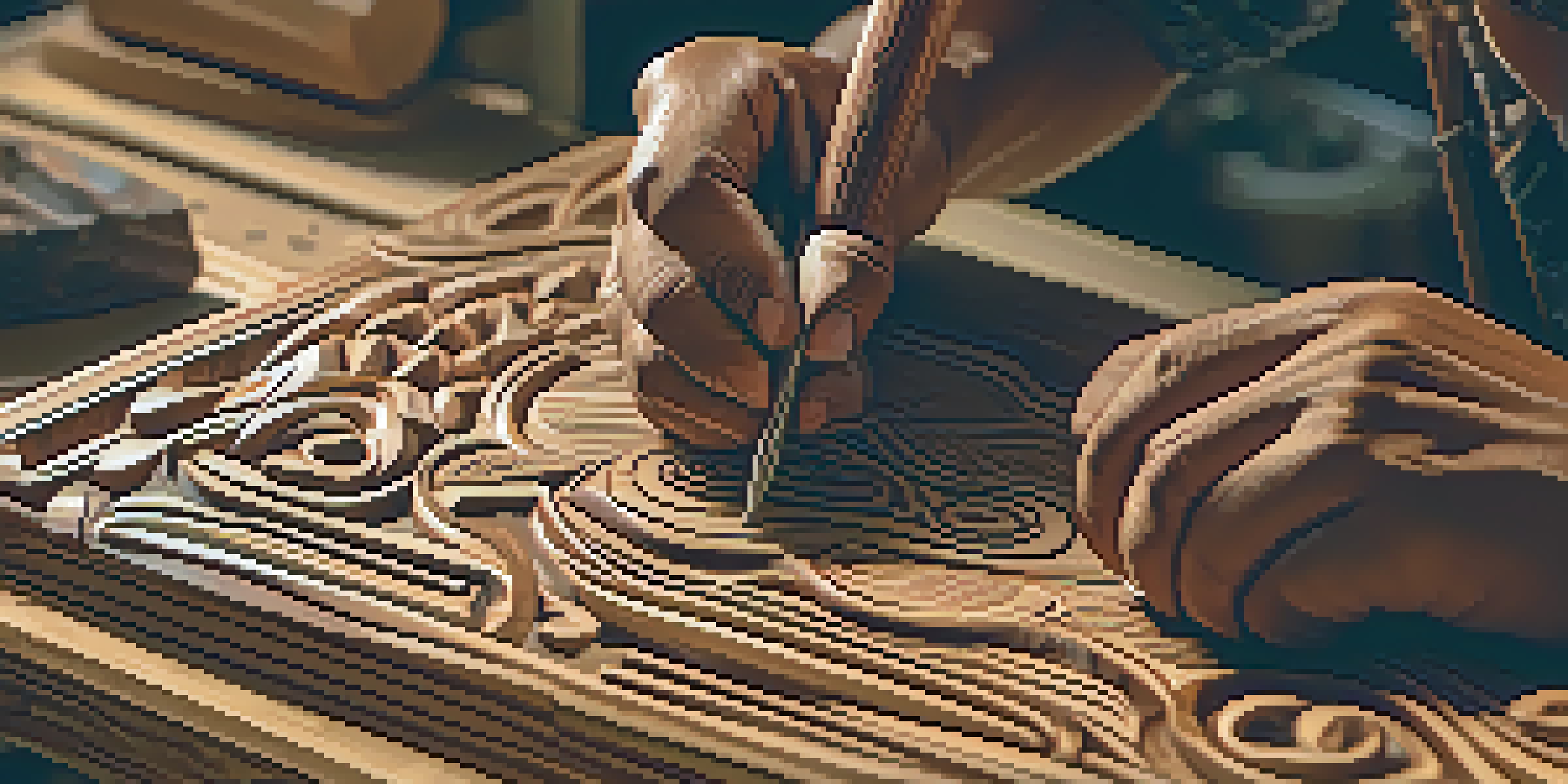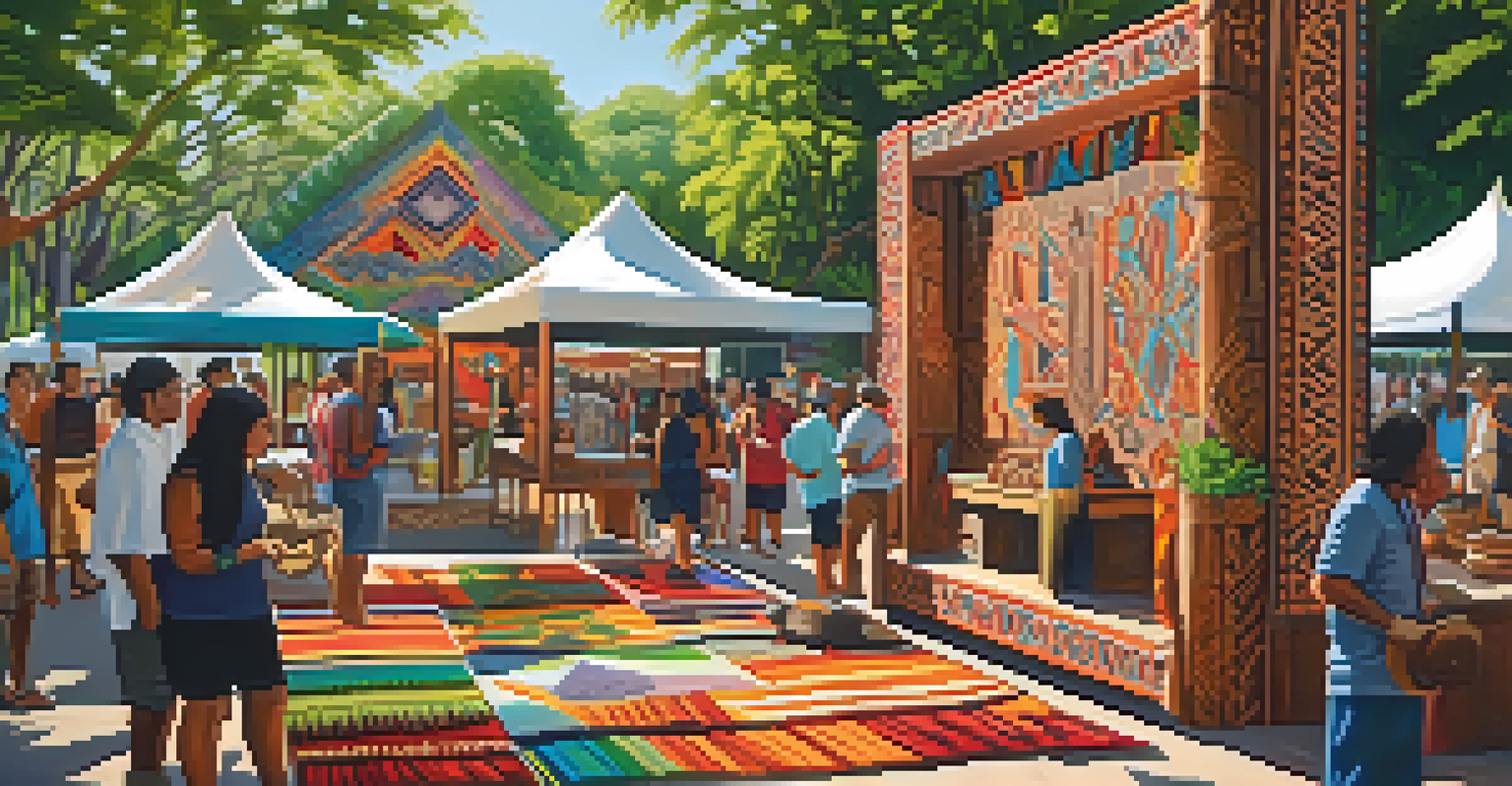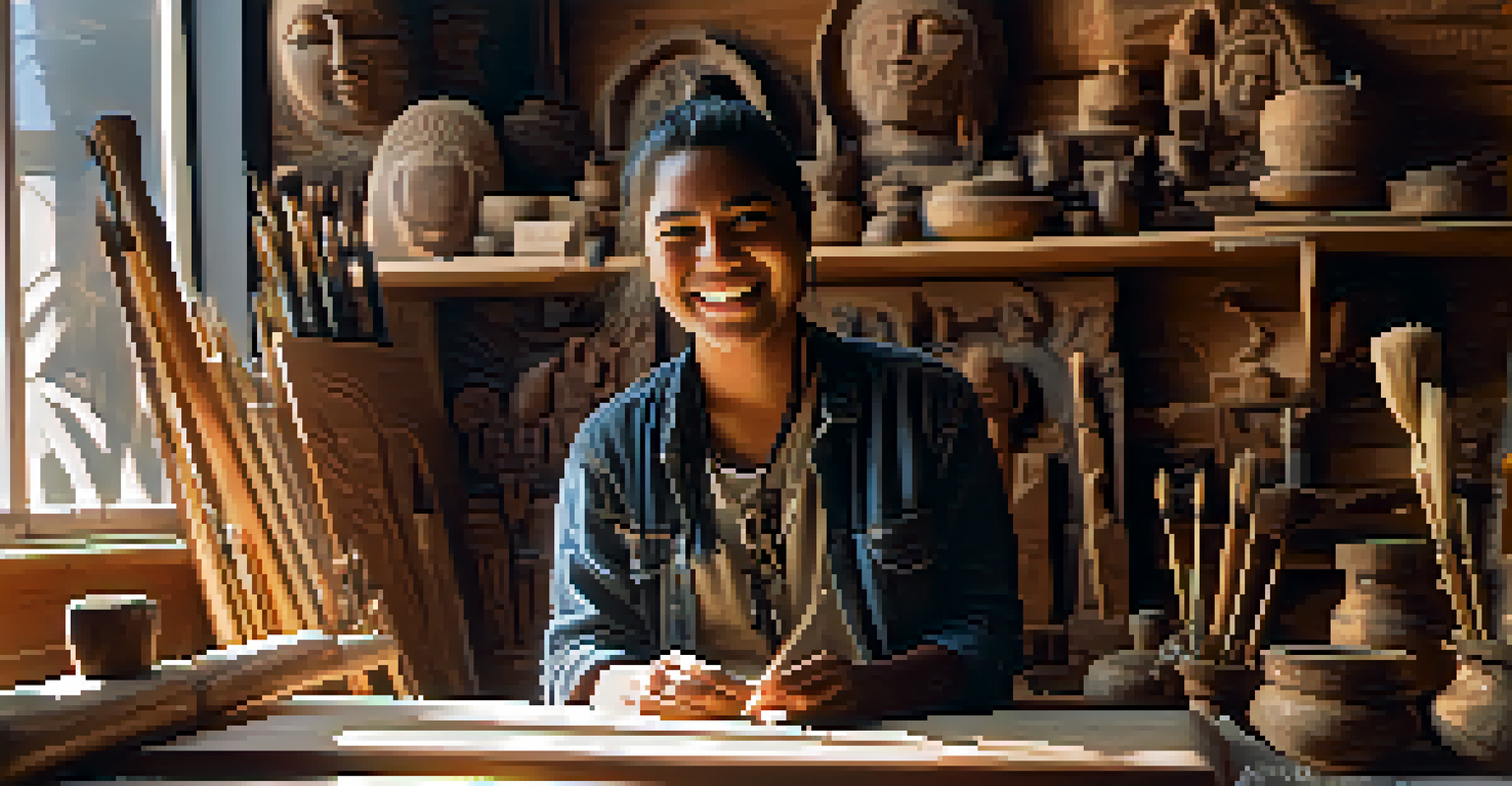Preserving Indigenous Carving: Challenges and Solutions

Understanding Indigenous Carving and Its Significance
Indigenous carving is not just an art form; it's a profound expression of culture, history, and identity. Each piece tells a story, often rooted in the traditions and beliefs of the community. For many Indigenous groups, these carvings are sacred and play a crucial role in rituals and daily life.
Art is an integral part of human experience, and Indigenous art embodies the stories, cultures, and histories of its people.
The intricate designs and techniques used in Indigenous carving have been passed down through generations, making them invaluable cultural treasures. However, as globalization increases, the significance of these traditional crafts is often overshadowed by mass-produced items. This shift can lead to a loss of cultural heritage and connection to ancestral practices.
Understanding the importance of Indigenous carving is the first step toward its preservation. By acknowledging its cultural significance, we can foster a greater appreciation for these artworks and the stories they carry, thus promoting efforts to protect and sustain this vital aspect of Indigenous identity.
Challenges Facing Indigenous Carving Today
One major challenge in preserving Indigenous carving is the impact of modernization and commercialization. As contemporary art markets flourish, traditional artisans often struggle to compete with cheaper, machine-made alternatives. This can diminish the value placed on authentic Indigenous works, leading to fewer opportunities for artisans.

Additionally, there is the issue of cultural appropriation, where non-Indigenous individuals or companies exploit Indigenous designs for profit without proper acknowledgment or compensation. This not only undermines the original artists but can also dilute the cultural significance of the art itself, as it becomes removed from its context.
Cultural Heritage at Risk
Indigenous carving faces threats from modernization, commercialization, and cultural appropriation, risking the loss of valuable traditions.
Finally, the loss of traditional knowledge poses a significant threat to Indigenous carving. As older generations pass away, the skills and stories associated with these crafts may not be adequately transferred to younger artists. This generational gap can result in a decline in the quality and authenticity of the carvings produced.
The Role of Education in Preservation Efforts
Education plays a pivotal role in preserving Indigenous carving practices. By teaching younger generations about the significance of their cultural heritage, communities can inspire pride and encourage the continuation of traditional crafting techniques. Workshops and mentorship programs can be effective in passing on these skills.
When we honor Indigenous art, we honor the voices and histories that have shaped our world.
Moreover, incorporating Indigenous art into school curriculums can foster a broader understanding and appreciation among non-Indigenous students. This exposure helps to create a more inclusive narrative around art and culture, highlighting the importance of Indigenous contributions to the artistic landscape.
Through education, both Indigenous and non-Indigenous communities can work together to promote awareness and respect for Indigenous carving. This collaborative approach not only empowers Indigenous artists but also enriches the cultural tapestry for everyone involved.
Community Initiatives Supporting Indigenous Artists
Many Indigenous communities are actively working to support their artists through various initiatives. Art cooperatives, for instance, provide a platform for artisans to showcase and sell their work, ensuring they receive fair compensation. These cooperatives often emphasize the importance of traditional techniques and the stories behind the carvings.
Additionally, community events such as art fairs and workshops not only celebrate Indigenous carving but also educate the public about its significance. These gatherings create a space for dialogue and collaboration, allowing Indigenous artists to connect with a broader audience and share their cultural heritage.
Education Essential for Preservation
Teaching younger generations about Indigenous carving fosters pride and helps maintain traditional crafting techniques.
By fostering a supportive environment, these initiatives empower Indigenous artists to continue their craft while preserving valuable traditions. The success of these programs can serve as a model for other communities seeking to protect their cultural practices.
The Importance of Digital Platforms for Exposure
In today's digital age, online platforms provide a unique opportunity for Indigenous artists to reach a global audience. Social media, websites, and online marketplaces allow artisans to showcase their work beyond their local communities, increasing visibility and potential sales. This exposure is vital for the sustainability of their crafts.
Digital storytelling is another powerful tool, enabling artists to share the narratives behind their carvings in engaging ways. Through videos, blogs, and social media posts, they can connect emotionally with audiences, fostering a deeper appreciation for their art. This connection can encourage support for Indigenous artists on a larger scale.
However, while digital platforms offer great potential, they also come with challenges, such as the risk of misrepresentation or cultural appropriation. It's essential for artists to navigate these spaces thoughtfully, ensuring that their work is presented authentically and within the context of their cultural significance.
Collaborations with Non-Indigenous Artists and Organizations
Collaborations between Indigenous and non-Indigenous artists can be a powerful way to promote cultural exchange and mutual respect. These partnerships often lead to innovative artistic expressions, blending traditional techniques with contemporary styles. Such collaborations can also raise awareness about the challenges facing Indigenous carving.
Non-Indigenous organizations, particularly galleries and museums, have a responsibility to represent Indigenous art authentically. By working directly with Indigenous artists, they can ensure that exhibitions accurately reflect the culture and significance of the works displayed. This approach fosters a more equitable relationship between artists and institutions.
Digital Platforms Expand Reach
Online platforms allow Indigenous artists to showcase their work globally, enhancing visibility and fostering deeper connections with audiences.
Through these collaborations, both Indigenous and non-Indigenous communities can learn from each other, paving the way for greater understanding and appreciation. Ultimately, these partnerships can contribute to the preservation of Indigenous carving and cultural heritage as a whole.
Government Support and Policy Changes Needed
For effective preservation of Indigenous carving, government support and policy changes are crucial. Policies that protect Indigenous intellectual property rights can help combat cultural appropriation and ensure artists are fairly compensated for their work. This legal protection encourages the continuation of traditional practices.
Furthermore, funding for Indigenous art programs can provide resources for skill development, workshops, and community initiatives. Government grants can enable artists to invest in their craft and connect with broader markets, ensuring their work reaches those who value it.

Lastly, promoting Indigenous voices in policy-making discussions can lead to more inclusive decisions that truly reflect the needs and aspirations of Indigenous communities. By prioritizing the preservation of Indigenous carving, governments can play a significant role in safeguarding cultural heritage for future generations.